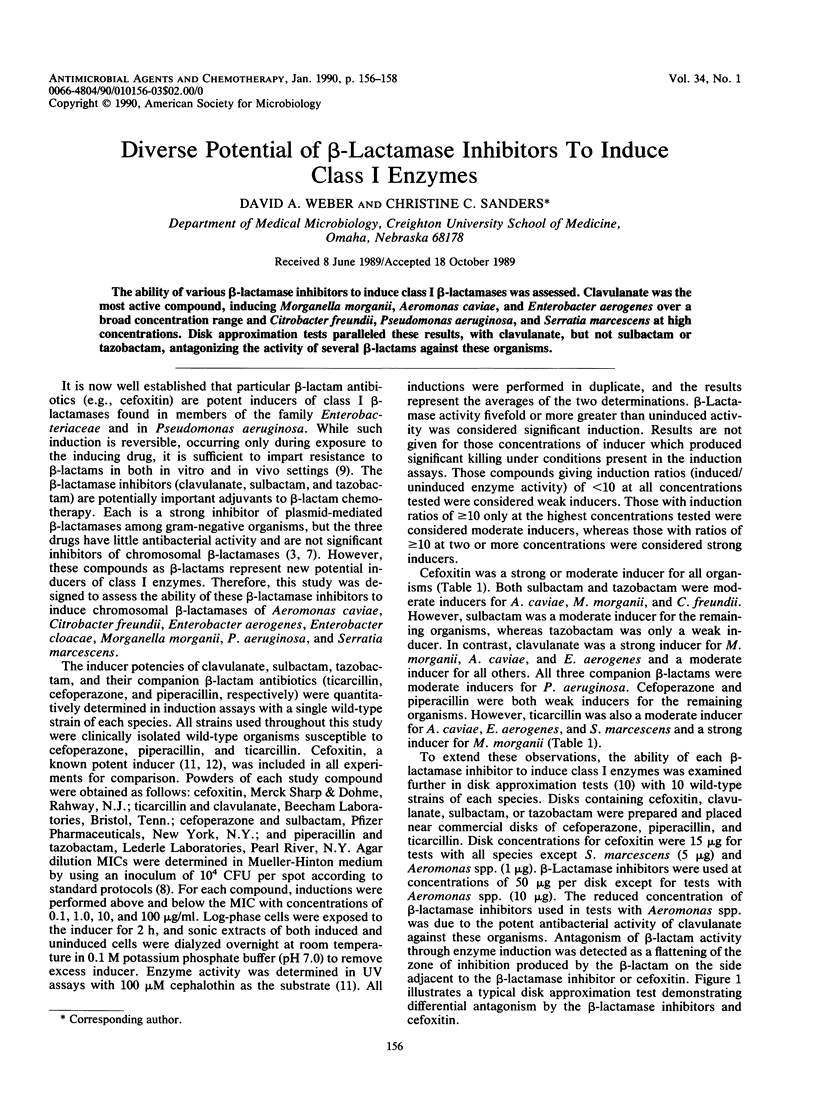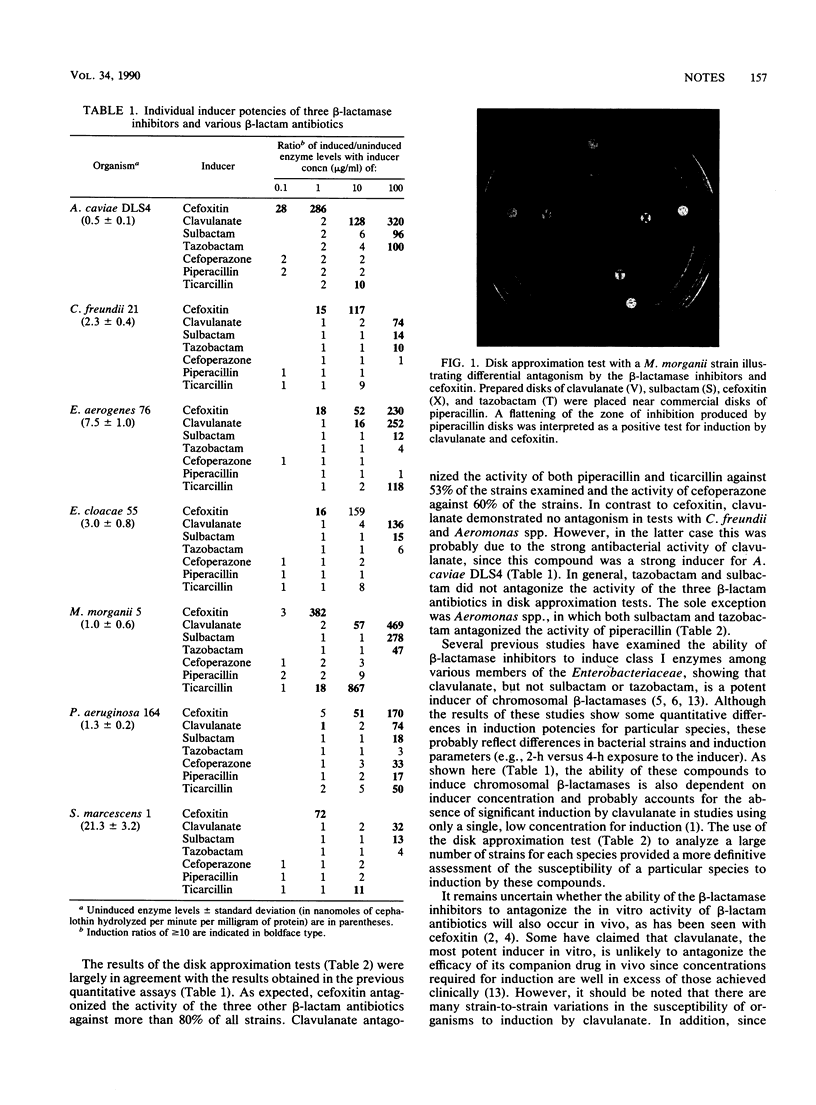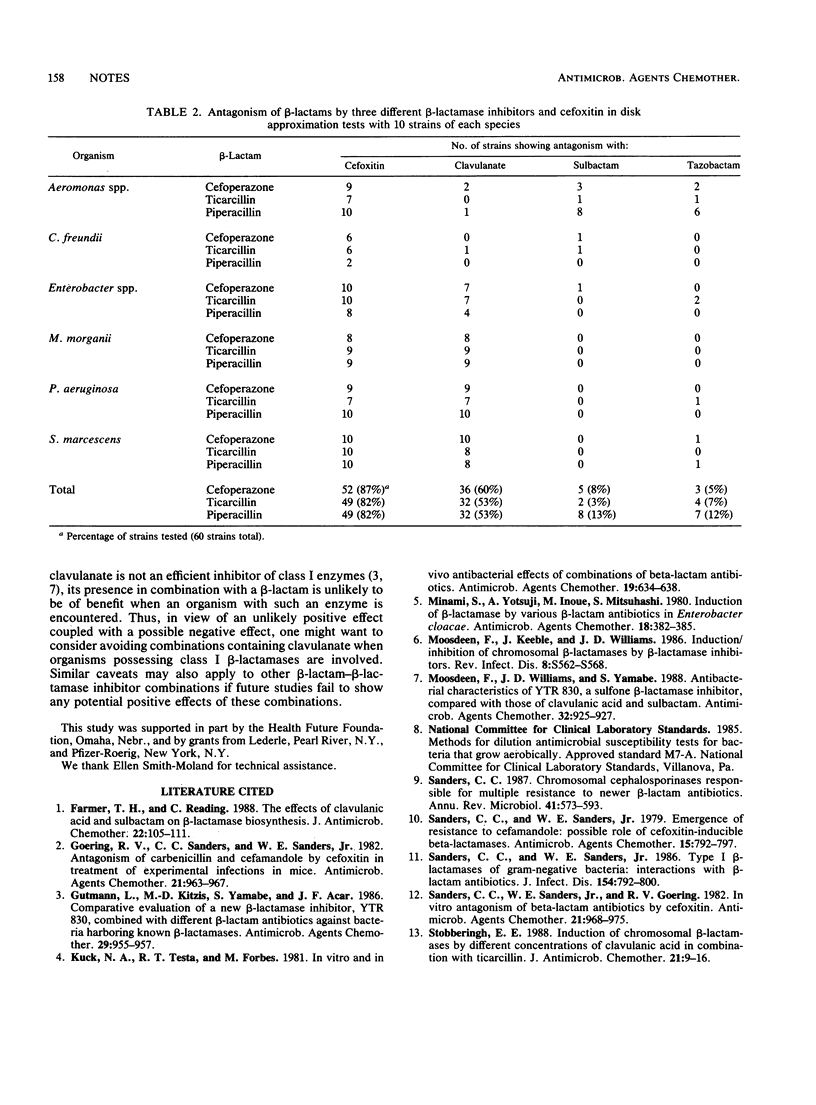Abstract
The ability of various beta-lactamase inhibitors to induce class I beta-lactamases was assessed. Clavulanate was the most active compound, inducing Morganella morganii, Aeromonas caviae, and Enterobacter aerogenes over a broad concentration range and Citrobacter freundii, Pseudomonas aeruginosa, and Serratia marcescens at high concentrations. Disk approximation tests paralleled these results, with clavulanate, but not sulbactam or tazobactam, antagonizing the activity of several beta-lactams against these organisms.
Full text
PDF


Images in this article
Selected References
These references are in PubMed. This may not be the complete list of references from this article.
- Farmer T. H., Reading C. The effects of clavulanic acid and sulbactam on beta-lactamase biosynthesis. J Antimicrob Chemother. 1988 Aug;22(2):105–111. doi: 10.1093/jac/22.2.105. [DOI] [PubMed] [Google Scholar]
- Goering R. V., Sanders C. C., Sanders W. E., Jr Antagonism of carbenicillin and cefamandole by cefoxitin in treatment of experimental infections in mice. Antimicrob Agents Chemother. 1982 Jun;21(6):963–967. doi: 10.1128/aac.21.6.963. [DOI] [PMC free article] [PubMed] [Google Scholar]
- Gutmann L., Kitzis M. D., Yamabe S., Acar J. F. Comparative evaluation of a new beta-lactamase inhibitor, YTR 830, combined with different beta-lactam antibiotics against bacteria harboring known beta-lactamases. Antimicrob Agents Chemother. 1986 May;29(5):955–957. doi: 10.1128/aac.29.5.955. [DOI] [PMC free article] [PubMed] [Google Scholar]
- Kuck N. A., Testa R. T., Forbes M. In vitro and in vivo antibacterial effects of combinations of beta-lactam antibiotics. Antimicrob Agents Chemother. 1981 Apr;19(4):634–638. doi: 10.1128/aac.19.4.634. [DOI] [PMC free article] [PubMed] [Google Scholar]
- Minami S., Yotsuji A., Inoue M., Mitsuhashi S. Induction of beta-lactamase by various beta-lactam antibiotics in Enterobacter cloacae. Antimicrob Agents Chemother. 1980 Sep;18(3):382–385. doi: 10.1128/aac.18.3.382. [DOI] [PMC free article] [PubMed] [Google Scholar]
- Moosdeen F., Keeble J., Williams J. D. Induction/inhibition of chromosomal beta-lactamases by beta-lactamase inhibitors. Rev Infect Dis. 1986 Nov-Dec;8 (Suppl 5):S562–S568. doi: 10.1093/clinids/8.supplement_5.s562. [DOI] [PubMed] [Google Scholar]
- Moosdeen F., Williams J. D., Yamabe S. Antibacterial characteristics of YTR 830, a sulfone beta-lactamase inhibitor, compared with those of clavulanic acid and sulbactam. Antimicrob Agents Chemother. 1988 Jun;32(6):925–927. doi: 10.1128/aac.32.6.925. [DOI] [PMC free article] [PubMed] [Google Scholar]
- Sanders C. C. Chromosomal cephalosporinases responsible for multiple resistance to newer beta-lactam antibiotics. Annu Rev Microbiol. 1987;41:573–593. doi: 10.1146/annurev.mi.41.100187.003041. [DOI] [PubMed] [Google Scholar]
- Sanders C. C., Sanders W. E., Jr Emergence of resistance to cefamandole: possible role of cefoxitin-inducible beta-lactamases. Antimicrob Agents Chemother. 1979 Jun;15(6):792–797. doi: 10.1128/aac.15.6.792. [DOI] [PMC free article] [PubMed] [Google Scholar]
- Sanders C. C., Sanders W. E., Jr, Goering R. V. In vitro antagonism of beta-lactam antibiotics by cefoxitin. Antimicrob Agents Chemother. 1982 Jun;21(6):968–975. doi: 10.1128/aac.21.6.968. [DOI] [PMC free article] [PubMed] [Google Scholar]
- Sanders C. C., Sanders W. E., Jr Type I beta-lactamases of gram-negative bacteria: interactions with beta-lactam antibiotics. J Infect Dis. 1986 Nov;154(5):792–800. doi: 10.1093/infdis/154.5.792. [DOI] [PubMed] [Google Scholar]
- Stobberingh E. E. Induction of chromosomal beta-lactamases by different concentrations of clavulanic acid in combination with ticarcillin. J Antimicrob Chemother. 1988 Jan;21(1):9–16. doi: 10.1093/jac/21.1.9. [DOI] [PubMed] [Google Scholar]



